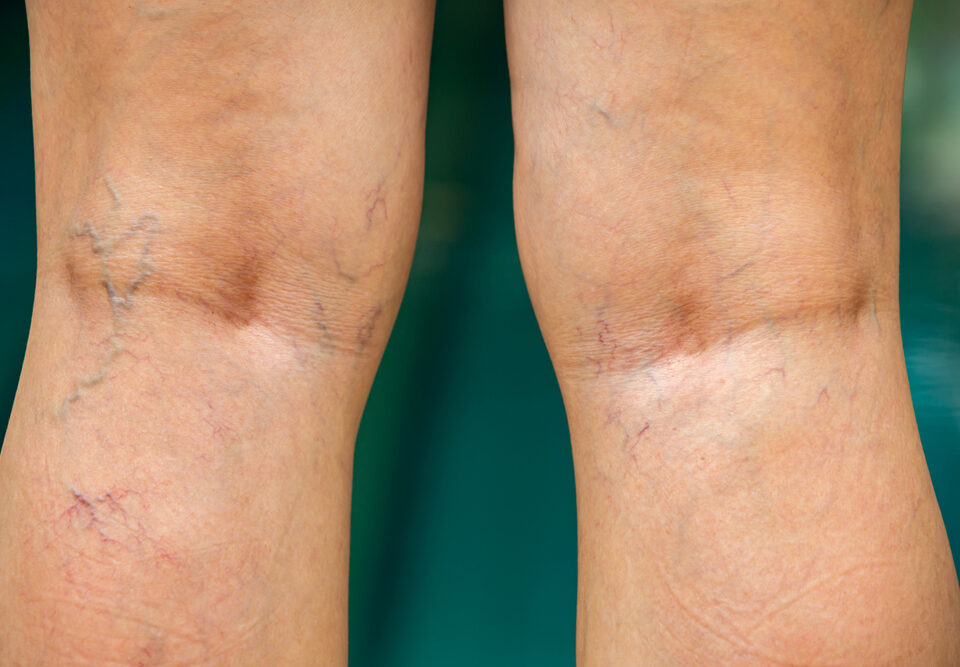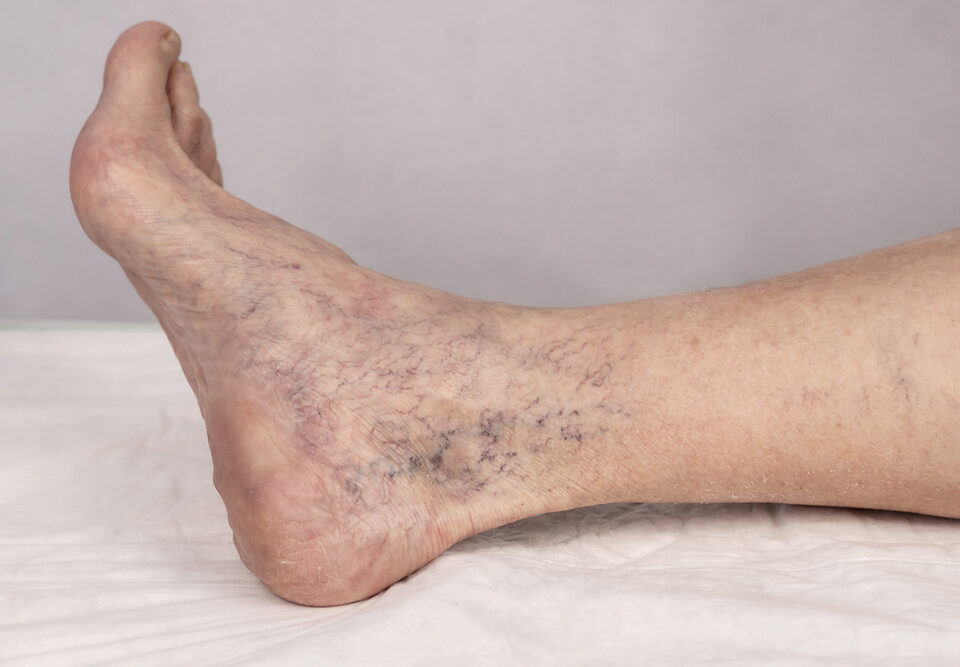When excess pressure is placed on our veins, particularly in our legs, the veins can develop problems with pushing “used” blood back to the heart for recirculation. When these problems develop, blood can pool in certain areas in the veins and can cause issues such as varicose veins. All of this is chronic venous insufficiency, which is literally constantly insufficient circulation in the veins.
Knowing the early signs and symptoms of chronic venous insufficiency (CVI) can help you prevent further complications. Let’s talk about what CVI is and what you can do about it.
How Blood Circulation Works Naturally
Whereas arteries circulate fresh blood from the heart to the rest of the body, veins circulate deoxygenated and nutrient-depleted blood back to the heart for renourishment. Problems with the arteries can cause a stroke or a heart attack, but issues with the veins are less life-threatening – and yet are more unsightly and cause more physical pains, namely via CVI and varicose veins.
Arteries have the natural benefit of the force of the heart pushing blood through them; the veins are far from the heart and must therefore use some of their own pressure, via the valves, to push blood through. This is oftentimes in opposition to the natural forces of gravity, especially in the legs.
What Causes Chronic Venous Insufficiency?
Chronic venous insufficiency occurs when the valves of the veins in our limbs fail to work effectively; the valves are tiny pressure points that help push the blood back toward the heart. The valves in the veins of the arms have an easier time than those in the legs, thanks to the fact that the arms are closer to the heart and that the arms naturally move around more than do the legs.
Any restriction or stagnation of blood flow in the veins causes blood to pool, resulting in venous reflux or insufficiency. When any of the valves in the veins are damaged or weak, blood leaks backward or does not flow forward – and this inability of the veins to function appropriately leads to swelling and skin changes, especially in the legs. This leads to chronic venous insufficiency.
Who Gets Chronic Venous Insufficiency?
Some of the risk factors of developing CVI are pregnancy and obesity, due to the increased pressure placed on the veins especially in the legs. Those whose professions require them to sit or stand for extended periods of time on a regular basis can also be at risk.
However, the most common cause of valve damage is the normal aging process. Women tend to get chronic venous insufficiency more than men do, and older women tend to have many more varicose veins than older men do.
What Are the Symptoms of CVI?
Consult a vein doctor if you are experiencing one or more of the following:
- New varicose veins or spider veins
- Swelling in the lower legs and ankles
- Aching, tiredness, or numbness in the legs
- Changes in the texture of the skin in the legs
- Leg ulcers
How CVI Is Diagnosed
Early diagnosis and treatment can prevent further complications of chronic venous insufficiency. If left untreated, CVI may progress and could develop a blood clot, which is the most life-threatening result of CVI.
Ultrasound is the most common procedure used to diagnose CVI. Duplex or vascular ultrasound is a 30- to 90-minute procedure used to examine blood circulation in the arms and/or legs. It does not use needles, anesthesia, or radiation.
This method uses a small device called a transducer. The device emits sound waves that bounce off the veins, and the waves are reflected back to the transducer. A monitor then displays the results.
Chronic Venous Insufficiency Treatment in Tampa
Our medical team here at Premier Vein & Vascular can diagnose and treat chronic venous insufficiency, varicose veins, and other circulation issues. We have convenient locations in Tampa and Largo.
If you would like to schedule an appointment, give us a call today at (888) VEINCARE (834-6227). You may also request an appointment now via our online form. We look forward to serving you.





